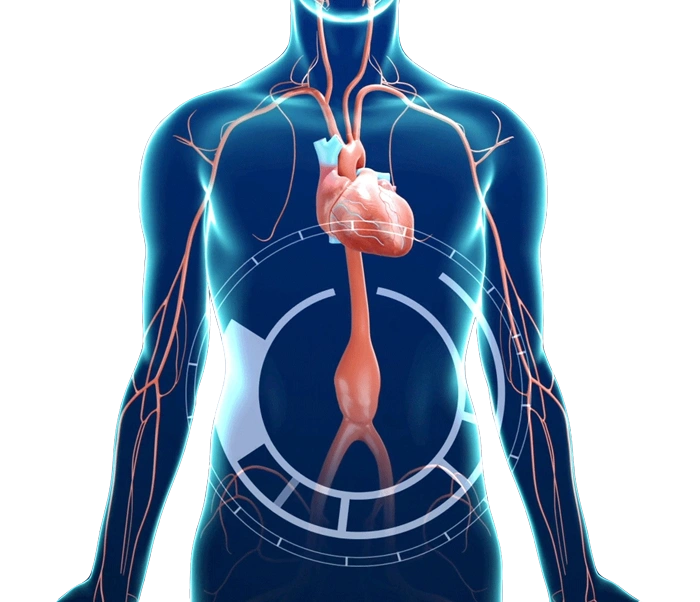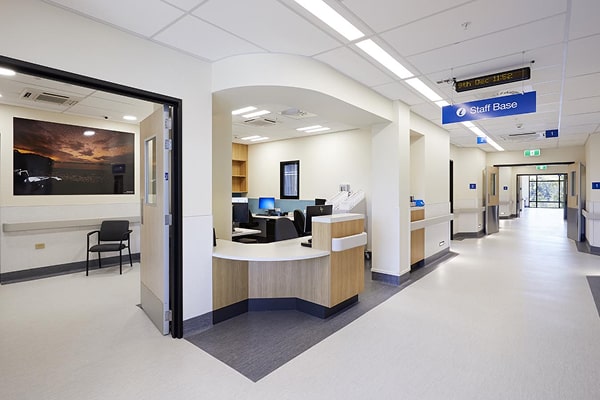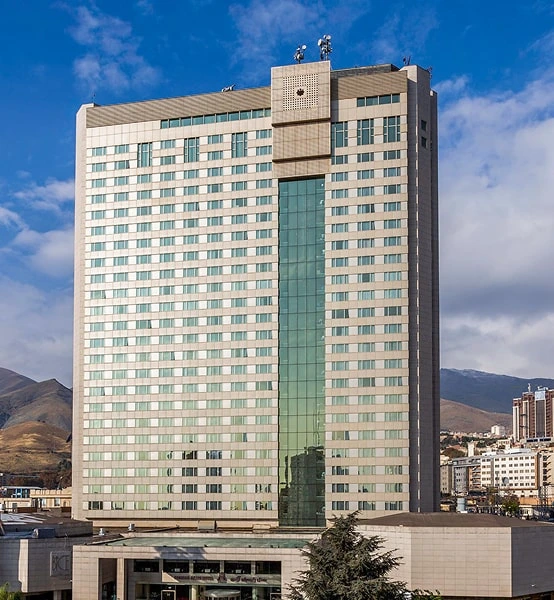Aortic Aneurysm Surgery: A Vital Treatment for Life-Saving
Introduction:
An aortic aneurysm is a cardiovascular condition in which the wall of the aorta, the body’s largest blood vessel, becomes weakened and expands. This condition can lead to an aortic rupture, a life-threatening situation. Aortic aneurysm surgery is one of the most important methods of treating this disease, and it is essential to prevent dangerous complications such as aortic rupture. This article will explore aortic aneurysm surgery, the types, causes, symptoms, treatment process, and outcomes.
What is an Aortic Aneurysm?
The aorta is the primary blood vessel in the body, starting from the heart and delivering oxygenated blood to the entire body. An aortic aneurysm occurs when the aorta’s wall becomes weakened, often due to high blood pressure or other factors, and expands abnormally. This condition can occur in various sections of the aorta, particularly in the two main areas:
- Ascending Aortic Aneurysm: This type occurs near the heart and is considered one of the more dangerous forms of aneurysms.
- Descending Aortic Aneurysm: This type forms in the lower part of the aorta and may develop less aggressively.
Aortic aneurysms can be asymptomatic, but if left untreated, they may lead to a rupture, which is often fatal.
Causes and Risk Factors for Aortic Aneurysm:
Several factors can contribute to the formation of an aortic aneurysm. The most significant risk factors include:
- High blood pressure (Hypertension): High blood pressure can damage the aortic wall.
- Genetic factors: Genetic diseases like Marfan Syndrome, Ehlers-Danlos Syndrome, and Aortic Stenosis can increase the risk of an aneurysm.
- Cardiovascular and vascular diseases: Conditions like atherosclerosis or valve insufficiency may predispose one to an aneurysm.
- Smoking: Smoking increases the risk of developing an aortic aneurysm.
- Age and gender: Aortic aneurysms are more common in older men.
Symptoms of an Aortic Aneurysm:
In many cases, an aortic aneurysm is asymptomatic and may only manifest when it enlarges or ruptures. Symptoms may include:
- Severe chest or back pain: This pain is often sudden and sharp and may also be felt in the abdomen.
- Fainting or dizziness: In the event of a rupture, the patient may experience severe weakness or even lose consciousness.
- Difficulty breathing: If the aneurysm puts pressure on the lungs or other body organs.
- Heart failure symptoms: Such as swelling in the legs, shortness of breath, and extreme fatigue.
Diagnosis of Aortic Aneurysm:
The diagnosis of an aortic aneurysm is typically made through imaging tests, which help the doctor assess the size and location of the aneurysm. The primary diagnostic methods include:
- Ultrasound: A simple, non-invasive method to visualize the aorta and measure the aneurysm’s size.
- CT Scan: This method is more precise and allows the doctor to better evaluate the aneurysm’s characteristics.
- MRI: Used for a more detailed examination of the aneurysm and surrounding arteries.
- Angiography: Sometimes used to examine the arteries more closely.
Aortic Aneurysm Surgery:
If the aortic aneurysm reaches a dangerous size or is expanding, surgery is the recommended treatment. There are two main types of surgery to treat aortic aneurysms:
- Open Aortic Surgery:
- In this procedure, the surgeon cuts out the damaged portion of the aorta and replaces it with a prosthetic or artificial graft.
- This type of surgery is typically used for large and complex aneurysms.
- Endovascular Aneurysm Repair (EVAR):
- A less invasive technique, in which a stent (a thin metal tube) is inserted through the arteries in the leg or groin.
- The stent is placed inside the aorta to reroute blood flow away from the aneurysm, preventing rupture.
- This method is suitable for smaller, less complicated aneurysms.
Advantages of Endovascular Aneurysm Repair (EVAR):
- Shorter recovery period.
- Lower risk compared to open surgery.
- Performed through smaller incisions.
Stages of Aortic Aneurysm Surgery:
- Initial Consultation and Medical Evaluation: Before surgery, the doctor assesses the patient’s overall health and evaluates the aneurysm’s status.
- Preoperative Preparation: The patient must follow specific instructions such as fasting and discontinuing certain medications.
- Surgical Procedure: Depending on the type of surgery, the surgeon performs either open surgery or uses the stent method.
- Postoperative Recovery and Care: After surgery, the patient will require special care and will typically stay in the hospital for several days.
- Follow-up Appointments: Patients must attend periodic follow-up visits to ensure no complications have arisen.
Outcomes of Aortic Aneurysm Surgery:
When performed in a timely manner, aortic aneurysm surgery can save the patient’s life. This procedure generally has a high success rate, and most patients return to normal life after surgery. The success rate of both open surgery and stent procedures is high in most cases; however, these surgeries require ongoing care and follow-up.
Risks and Complications of Aortic Aneurysm Surgery:
As with any surgery, there are risks involved. Potential complications of aortic aneurysm surgery include:
- Severe bleeding
- Infection at the surgical site
- Kidney failure
- Heart failure
- Blood clots and circulation issues
Conclusion:
An aortic aneurysm is a serious and life-threatening condition that requires immediate treatment. Aortic aneurysm surgery, whether open surgery or endovascular repair, can save a patient’s life. With advancements in medical technologies, the outcomes of these surgeries have significantly improved. The key to successfully treating an aortic aneurysm is early detection and prompt action. If you experience any symptoms or risks associated with this condition, consulting with a cardiovascular specialist is essential to receive timely treatment and prevent complications.
The Role of Nutrition in Preventing and Managing Aortic Aneurysm
Introduction:
Nutrition plays a crucial role in the prevention of cardiovascular diseases and significantly impacts the risk of developing an aortic aneurysm. A proper diet can help strengthen blood vessel walls, control blood pressure, and reduce risk factors such as high cholesterol and inflammation. In this article, we explore the role of nutrition in preventing and managing aortic aneurysms.
Nutrition and Risk Factors for Aortic Aneurysm
Aortic aneurysms often develop due to factors such as high blood pressure, atherosclerosis (hardening of the arteries), and inflammation of the aortic wall. Proper nutrition can reduce these risk factors and support cardiovascular health. Specifically, certain foods and dietary habits can positively impact the reduction of aortic aneurysm risk.
- Controlling Blood Pressure with Healthy Nutrition
High blood pressure is one of the leading factors contributing to the weakening of the aortic wall and the formation of an aneurysm. A healthy diet can help regulate blood pressure. Key dietary tips for blood pressure control include:
- Reducing sodium (salt) intake: Excessive salt consumption is a major contributor to high blood pressure. Reducing salt intake and using low-sodium salts and spices instead of regular salt can help lower blood pressure.
- Increasing potassium intake: Potassium helps balance sodium levels in the body and prevents high blood pressure. Rich sources of potassium include bananas, potatoes, spinach, and avocados.
- DASH Diet: The DASH (Dietary Approaches to Stop Hypertension) diet is specifically designed to reduce blood pressure and includes the consumption of fruits, vegetables, whole grains, low-fat dairy, and healthy protein sources like chicken, fish, and legumes.
- Reducing LDL (Bad Cholesterol) Levels
High cholesterol, particularly LDL (bad cholesterol), can contribute to atherosclerosis and increase the risk of an aortic aneurysm. A well-balanced diet can help reduce LDL cholesterol levels. Dietary strategies to lower cholesterol include:
- Consuming healthy fats: Unsaturated fats found in olive oil, avocados, and nuts can help reduce LDL cholesterol levels.
- Increasing fiber intake: Fiber found in whole grains, vegetables, fruits, and legumes can help reduce cholesterol absorption and prevent atherosclerosis.
- Reducing trans fats and saturated fats: High intake of trans fats and saturated fats (found in processed foods, fast foods, and fatty meats) can raise LDL cholesterol levels. Therefore, reducing the consumption of these fats is important.
- Anti-inflammatory Foods
Chronic inflammation is a key factor in the deterioration of blood vessel walls and the development of an aortic aneurysm. Certain foods possess anti-inflammatory properties that can help prevent inflammation and protect the aortic wall. These foods include:
- Fatty fish (such as salmon and sardines): These fish are rich in omega-3 fatty acids, which have anti-inflammatory properties and contribute to heart and vascular health.
- Turmeric and ginger: These spices contain strong anti-inflammatory compounds that can help reduce inflammation in the body.
- Leafy green vegetables and fruits: Vegetables like spinach, kale, and broccoli, along with fruits like berries, apples, and oranges, are rich in antioxidants and anti-inflammatory vitamins.
- Antioxidants for Strengthening the Aortic Wall
Antioxidants help strengthen the aortic wall and protect it from oxidative damage. Foods rich in antioxidants include:
- Berries: Strawberries, raspberries, blueberries, and other types of berries are high in antioxidants that help reduce oxidative damage.
- Colorful vegetables: Vegetables like bell peppers, carrots, and squash contain vitamins A and C, which support vascular health and strengthen blood vessel walls.
- Green tea: Green tea contains polyphenols that offer both anti-inflammatory and antioxidant properties.
- Maintaining a Healthy Weight and Blood Sugar Management
Obesity and diabetes are major risk factors for cardiovascular diseases and aortic aneurysms. By following a balanced diet, individuals can manage their weight and keep their blood sugar levels within a healthy range. Nutritional tips for maintaining a healthy weight include:
- Consuming low-calorie, nutrient-dense foods: These include fruits, vegetables, whole grains, and lean proteins.
- Regular physical activity: In addition to a healthy diet, regular exercise helps reduce weight and control blood sugar levels.
- Avoiding Alcohol and Tobacco Use
Smoking and excessive alcohol consumption can lead to increased blood pressure and damage to blood vessels. Reducing or quitting smoking and limiting alcohol intake can significantly improve cardiovascular health and reduce the risk of aortic aneurysm.
Conclusion:
A healthy diet plays a vital role in preventing aortic aneurysms and reducing the risk of rupture. By adhering to a diet rich in nutrients, reducing salt and unhealthy fats, consuming anti-inflammatory and antioxidant-rich foods, and maintaining a healthy weight, one can prevent this dangerous condition or mitigate its complications. Additionally, it is essential to manage other risk factors such as high blood pressure, high cholesterol, and smoking. Therefore, maintaining a healthy lifestyle and seeking regular consultation with a healthcare provider is of utmost importance.








